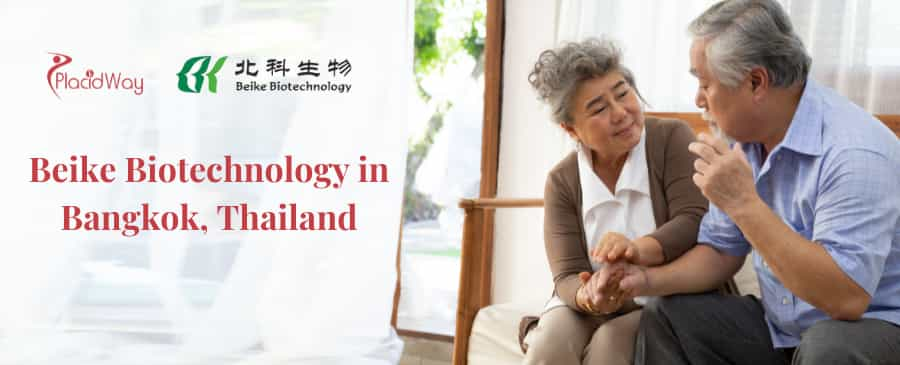
We have taken long strides over the past years… We are very lucky to be living in an era in which cell and regenerative medicine is developing rapidly. - Dr. Sean Hu, Founder, Beike Biotechnology
Welcome to Beike Biotechnology in Bangkok, Thailand
Beike Biotechnology is the world leader in providing stem cell treatments for patient with major injuries and diseases. Our treatments have been safely administered to over 22,500 patients, combining the most intensive stem cell protocols available with comprehensive Func- tional Medicine support therapy.
Our mission is to provide accessible and cost-effective cellular therapy to those in need to improve each patient’s quality of life. Beike partners with only the most esteemed doctors and scientists, all of whom are specialists in delivering umbilical cord and cord blood-derived stem cell therapy to treat serious illness including neurological, vascular, and liver diseases.
Our technology has been used in more than 60,000 stem cell transplants since 2001 and our network of scientists has published over 100 peer-reviewed research papers in both Western and Chinese medical journals.
This information guide will give you an overview of Beike Biotechnology, our stem cell processing, and the various treatments provided at our affil- iated partner hospitals. We invite you to review this information and contact us with any further questions or requests.
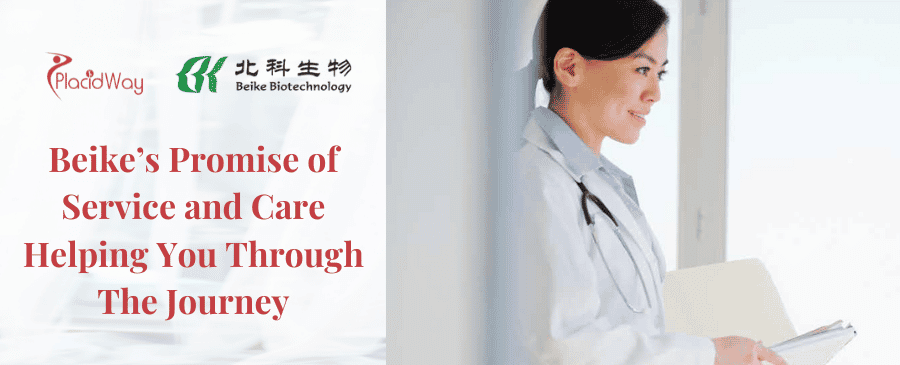
Beike’s Promise of Service & Care Helping You through the Journey
"At Beike Biotechnology, our commitment to providing exceptional service and compassionate care means we will support you every step of your journey."
Inquiry Services
Our International Department was created with the specific pur- pose of making communication as easy as possible for inquiring international patients. Representatives from across the globe including the United States, Canada, United Kingdom, Italy, Por- tugal, Brazil, Germany, France, Spain, China, HongKong, Romania, India, Colombia, Turkey, Poland, and Thailand will answer any questions you have about treatment and the registration process by phone, Skype, or email.
Hospital Care
Upon arrival at the airport, you will be received by a multilin- gual (including English) patient coordinator immediately out- side baggage claim and brought to the hospital. In addition to expert medical staff, each center has a Beike-provided service team to help coordinate each patient’s care. Our multilingual service team also assists patients and their caregivers with needs both inside and outside the hospital.
All rooms have accommodations for both patient and care- giver and every room has an internet connection. Moreover, public computers are available for you to use if you choose not to travel with your own. We also encourage every patient to maintain a blog or share their experience with our coordi- nators so family members, friends, and other patients can be kept up-to-date and receive more information.
Returning Home
While the treatment itself may last several weeks, its main ben- efits frequently become evident after the patient has returned home. In order for our medical staff to monitor your progress, it is very important for us to maintain contact with each patient. Our follow-up team will send you a medical questionnaire at intervals of one, three, six, and twelve months after treatment. You may complete the questionnaire by yourself or with the help of your doctor.
About Beike Biotech - A Decade of Research and Clinical Practice
Beike’s Creation
Beike (pronounced bay-KUH) is a Chinese biotechnology company with its main offices located in Shenzhen’s Hi-Tech Industrial Park and Taizhou’s China Medical City. The company was founded with capital from Beijing University, Hong Kong University of Science and Technology and Shenzhen City Hall. The company was also supported with grants from the China State National Fund. In total, Beike has received over US$6 million in Chinese government grants. Beike is a private company but operates with support from the Chinese government.
Beike’s stem cell research and clinical applications were developed over a period of several years beginning in the late 1990’s primarily at Zhengzhou University. Over time, a network of over sixty Ph.D’s from Beijing University, No. 3 Army Medical University, Zhongshan Medical University, and Guiyang Med- ical College contributed to advancing Beike’s treatment technologies. Many of Beike’s scientists have experience at leading Western universities including Stanford, the University of Minnesota, and UCLA.
After conducting trials for human safety and effectiveness, doctors at Zheng- zhou treated the first Amyotrophic Lateral Sclerosis (ALS, also known as Motor Neuron Disease) patient in 2001. From 2001 to 2005, over 200 patients were treated and participated in studies in order to determine the efficacy of our therapies for a small number of end-stage and otherwise incurable diseases. All of those patients had run out of conventional treatment options.
Quality Assurance
Beike is intensely focused on maintaining rigorous quality control systems. This has led to Beike being awarded the prominent ISO9001 certification by the International Organization for Standardization (ISO). This internationally recognized designation signifies that Beike has established a Quality Management System (QMS) that complies with ISO9001 standards.
Beike’s has extremely high stem cell production and treatment standards as evidenced by Beike becoming the first Chinese member of the International Society of Cellular Therapy (ISCT). Beike is also the only mainland China treatment organization, and the first company in the world, to be granted certification by the American Association of Blood Banks (AABB) for processing, storage, and distribution of umbilical cord blood stem cells, umbilical cord mesenchymal stem cells, placenta mesenchymal stem cells, and whole blood nucleated cells together.
Incorporation
Beike was incorporated in July 2005 after exhaustive research by the collaborating scientists into this technology. Since 2005, Beike Biotech has provided hospitals with stem cells for the treatment of over 22,500 patients and suppliers stem cells to more than 90 hospitals. Beike is currently the largest stem cell provider in the world. Beike has over twenty labs throughout China, with the chief research laboratories located in Shenzhen and Taizhou.
Some clinical application laboratories reside inside the government blood banks with which Beike partners while others are located within the collaborating hospitals where patients are treated. This system allows us to maintain full oversight over blood testing for infectious diseases and the highest standards throughout the entire process of stem cell manufacturing. All of the laboratories are outfitted with cutting-edge equipment and have been fully certified by the relevant drug authorities.
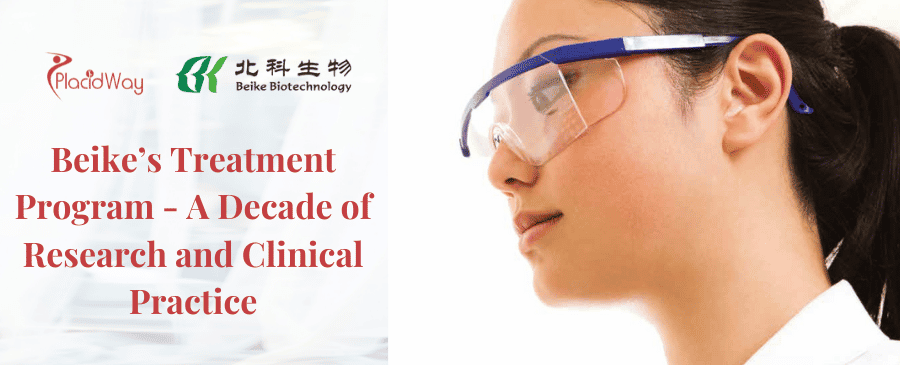
Beike’s Treatment Program - About Our Stem Cells
Most cells in the body have a specific function in particular organs, such as the liver, skin or brain. Stem cells are relatively undifferentiated and still have the ability to develop into differ- ent types of cells to exert different functions. The most notable characteristic of a stem cell is its ability to reproduce a completely new, nor- mal and even younger cell. As a result, people can use their own stem cells, those from some- one else, or stem cell-derived tissues or organs to replace ill or aging tissues or organs. This permits treatment of a wide range of diseases and injuries, many of which cannot be treated with traditional medical methods.
In addition to reproducing new cells and pro- viding cell replacement, an important function (and the explanation for the majority of stem cell treatment benefits) is to provide the body with cell factors to help to encourage the following functions:
- Immune regulation
- Reducing apoptosis, or cell death
- Stimulating the differentiation of the patient’s own stem cells
- Promoting neoangiogenesis, or the growth of blood vessels resulting in increased blood flow to damaged areas
- Reducing scarring
- Improving the effective conduction of intercellular electrical signals and transduction
It is important to note that there is generally very little to no concern by informed or unbiased scientists about cord blood, cord mesenchymal or bone marrow-derived stem cells -- unlike embryonic or fetal stem cells -- causing cancer and tumors. None of the 22,500+ patients that have been treated with Beike’s stem cells have developed cancer due to the treatment. In actu- ality, researchers are currently finding ways to use umbilical cord and adult stem cell-derived ‘killer cells’ to attack tumors and treat cancer patients.
Beike’s Two Stem Cell Types
Beike provides stem cells from two sources: umbilical cord blood and umbilical cord tissue. After reviewing the patient’s full medical infor- mation, the doctors of our medical department will recommend which source of stem cells should be used for treatment. In some cases, the protocols for some patients may include the use of more than one type of stem cells.
Umbilical Cord Blood-Derived Stem Cells (UCBSC)
For many ailments such as spinal muscular atrophy, ataxia, and optic nerve conditions, Beike recommends treatment using umbilical cord blood (UCB) stem cells. Our UCB stem cell injections consist of three subsets of stem cells: hematopoietic stem cells, endothelial progen- itor cells, and mesenchymal stem cells. As has been shown in numerous studies, hematopoietic stem cells and endothelial progenitor stem cells are likely to form tissues in the body.
Mesenchymal stem cells can assist in the growth of chondrocytes (a type of cell critical to tissue renewal, particularly cartilage), liver cells, kidney cells and neurons, and also conduct repairs in relation to vascular disorders within the brain, ocular areas, and throughout the body including the heart, kidney, and pancreas. At this stage of stem cell research, it is believed that the benefits patients report have come from the cell growth factors that are released by the stem cells after their administration.
Umbilical Cord-Derived Mesenchymal Stem Cells (UCMSC)
Based upon recent research publications and experience, Beike protocols utilize UCMSC stem cells for appropriate conditions. These injections contain a higher percentage of mes- enchymal stem cells than the UCB stem cell injections and closely resemble the makeup of the injections cultured from patients’ own bone marrow. Currently, we recommend all multiple sclerosis (MS) and spinal cord injury (SCI) patients receive this type of stem cell in- jection as the cells not only produce important growth factors and differentiate into desired cell types but can also regulate the immune system, reducing inflammation, scarring, and cell apoptosis.
Treatable Conditions
- Ataxia
- ALS & MND
- Autism Cerebral Palsy
- Multiple Sclerosis Muscular Dystrophy Optic Nerve Hypoplasia – Septooptic Dysplasia Spina Bifida
- Spinal Cord Injury Spinal Muscular Atrophy Stroke
- Traumatic Brain Injury
- Visual Impairments
Note: Please note Beike’s treatment protocol is not only limited to these conditions.
Breakdown of Treatable Conditions
Between 2005 and 2017, 22,500 patients were treated with stem cells from Beike’s laboratories under specifically designed protocols.
- ALS & MND - 761 cases
- Ataxia - 772 cases
- Autism - 492 cases
- Cerebral Palsy - 1722 cases
- Cirrhosis - 568 cases
- Diabetes Type 1 & 2, Diabetic Foot - 500 cases
- Encephalatrophy - 246 cases
- Femoral Hear Necrosis - 735 cases
- Multiple Sclerosis - 238 cases
- Multiple System Atrophy - 107 cases
- Muscular Dystrophy - 2717 cases
- Optic Conditions - 552 cases
- Paraplegia/Spinal Cord Injury - 2131 cases
- Sequelae of Cerebrovascular Disease/Stroke - 683 cases
- Sequelae of Encephalitis - 105 cases
- Systemic Lupus Erythematosus - 299 cases
- Traumatic Brain Injury - 345 cases
- Others - 2656 cases
Cell Processing and Safety Standards - Preparing Our Stem Cells for Treatment
· Umbilical Cord Sample Collection
It is a common practice in China for mothers to voluntarily donate the umbilical cord blood from the birth of their healthy full-term children. Every woman who enters a hospital in China to give birth is automatically tested for all major diseases including hepatitis and HIV. Detailed family histories are also collected from each mother prior to donation. This represents the first step of the screening process. Only umbilical cord products from women who have been fully screened and found to be completely healthy can be collected.
The second step in the screening process occurs when each sample is tested by third party organizations. Once the product has been tested negatively for communicable diseases, it is transferred to our laboratories and officially becomes the property of Beike Biotechnology. All samples (umbilical cords and cord blood) are transferred within just a few hours and labeled with tracking numbers upon arrival. From this stage, Beike is responsible for each and every sample that is processed and provided to patients. The cord blood and cord samples are then processed in two separate areas of the Beike laboratory.
· Umbilical Cord Blood Stem Cells Processing and Cryopreservation:
Cord blood stem cells are first centrifuged in an AUTOXPRESS ® device. During the procedure stem cells (mononuclear cells), red blood cells, and plasma are all separated from each other. The separated stem cells are then placed in a sterilized, temperature and humidity controlled incubator where they are matured in a culture medium for 2 to 5 days. Once the desired level of maturation has been reached, the stem cells are then separated into 100 tubes, and samples from those tubes are taken for testing while the tubes themselves are kept frozen.
The test samples are inspected for any malformation, infection, or other anomaly during 14 days. Once all tests have been conducted successfully, the cord blood stem cells in the tubes are thawed and then put back in a new medium to continue the maturation process until it is fully completed. The cells are then tested once more before being put in a preservative medium and cryogenized in nitrogen tanks.
· Umbilical Cord Mesenchymal Stem Cells Processing and Cryopreservation:
Umbilical cords are cleaned and cut into 1 to 4 mm cubes. Pieces are then put in a flask along with a culture medium in order for the mesenchymal stem cells to come out of the tissues and start replicating. As the volume of the cells increases in each bottle, the culture medium is being changed to accommodate the expansion process. The culture’s first passage will last for around 17 days until the bottles are 75% filled.
The culture medium is replenished for the second and third passage, which will both last for 2 to 3 days. Once the 3rd passage is accomplished successfully, the cells are placed in 100 tubes, and samples from those tubes are taken for testing while the tubes themselves are kept aside, frozen. At this point the cells will be tested again for any malformation, infection, or other possible anomaly. These tests will last 14 days. Once the tests are passed success- fully the cells will be cultured 2 more times (4th and 5th passage). They are then put into cryogenic tanks for banking.
· Thawing and Final Checks
When required for clinical use, specific stem cell samples are removed from their nitrogen tanks and the cryopreserving medium is washed away. At that point, all batches of stem cells will undergo final testing. During this process they will be checked for quality, quantity, viability, and safety. Each cell preparation is accompanied by 501 standard files, 655 quality records, and 130 files following cell preparation, testing and quality assessment. Files of each cell preparation are traceable and ensure clients of their cells’ quality. After successfully passing the final tests, each unit is placed into either a sterile vial or a sterile IV bag for future transplantation.
· Packing and Transport
Two to three days a week, our lab technicians prepare the cell products to be transferred to the treatment center. Each patient is assigned his or her catalogued sample and this information is tracked during transport, reception, and transplant of each unit. Cells are transported to the center on the day of transplant which takes place as soon as the cells reach the hospital. They are typically provided to the patients within 8 hours after laboratory release. All Beike stem cell packets are always under the supervision and care of Beike employees.
Stem Cell Delivery Methods - How the Doctors Inject the Stem Cells
The clinical staff at our partner hospitals utilizes five methods for injecting the stem cells: intravenous, intrathecal injection, retrobulbar injection, intramuscular injections, and intra-articular injection. This combi nation is unique to Beike and provides the best method for both safety and effectiveness. Following Beike protocol, doctors at your treatment center will prescribe a specific combination best suited to treat your condition following the initial check-up upon arrival.
The injections are minimally invasive and yet highly effective in delivering stem cells to the damaged parts of the body. Depending on the type of injection scheduled, patients will receive local or no anesthesia. Certain patients or children may receive a very light general anesthesia if the doctors deem it required.
Intravenous (IV) Injection
The intravenous (IV) delivery method is a very simple process and should already be familiar to most patients. A tubing line with a catheter tip threaded over a needle is placed into the patient’s vein. Once proper placement is obtained, the needle portion is removed and the flexible plastic catheter is left in place in the vein with the tubing attached. The stem cell solution mixed with the cord blood serum will be administered through the IV. After the evaluation by local medical staff, Dexameth- asone may be considered beforehand to avoid any potential allergic reactions. Typically, no sedation is required for this procedure. The entire IV injection process takes less than forty-five minutes to complete. The most common risks involved in this procedure include the formation of an innocuous blood clot or hematoma under the injection site. Since sterile procedures are followed during the entire process, the risk of infection is very low.
Intrathecal Injection (through lumbar puncture)
A lumbar puncture (LP) is also commonly referred to as a spinal tap. It is a procedure used to access the cerebrospinal fluid of the brain and spinal cord and helps to deliver stem cells directly into the cerebral spinal fluid, bypassing the blood-brain barrier. Our doctors have determined that this is the least invasive method for delivering stem cells directly into the central nervous system. Cerebral spinal fluid (CSF) is used by the body to provide protection for the brain and spinal cord, limiting the possibility of injury to these areas. The body constantly produces CSF and thus any withdrawn fluid is naturally replaced within a few hours. The patient is asked to not eat or drink for at least four to six hours before the procedure.
Patients will be moved into a surgical operating suite where the doctor, assisted by two nurses, will provide the injection. Patients might also be offered a mild basal anesthetic to help calm them and keep them pain- free during the procedure. Patients will be placed on their side with their backs near the edge of the table or bed. A nurse will then assist patients in bending their knees towards their abdomen and flexing their head to the chest in a fetal position. This position helps to separate the vertebrae so that the needle can be inserted more easily.
The doctor will first examine the patient’s lower back and mark the proper insertion site (between the lumbar vertebrae L3/L4 or L4/L5). The area is then cleaned with an antiseptic and a local anesthetic is injected under the skin to numb the area where the needle will be inserted into the spinal canal. Once the needle is in the correct position, the stylet from the spinal needle is then withdrawn and around 2 ml of cerebral spinal fluid is collected. The opening pressure of the CSF will be taken during this collection by using a simple column manometer. The stem cells (around 1 ml) and saline solution (around 1 ml) will then be administered respectively through the needle after the collection of cerebral spinal fluid.
The procedure is ended by withdrawing the needle with the reinserted stylet while placing pressure on the puncture site. Placement of the needle, along with the infusion, is typically completed in twenty minutes to one hour the needle may cause some temporary dis- comfort but there is no danger of injuring the spinal cord because the cord terminates between the first and second lumbar vertebrae. Patients may experience some pain radiating down the leg and/or muscle twitching from the needle touching the spinal nerve.
All patients are asked to lie flat for six hours after the procedure to avoid a spinal headache. These headaches are believed to be a result of the change in fluid volume within the spinal canal. Even lying flat, some patients might still develop a headache. This might last for up to forty-eight hours. Patients should alert the doctors if they have a very severe headache, stiff neck, loss of sensation below the puncture area, or any leakage from the injection area. Our doctors have performed hundreds of lumbar punctures and we have an excellent safety record concerning this procedure. We have never even had one case of an infection or serious injury that could be attributed to this procedure. You can find more information in the Adverse Reactions section of the guide.
While we understand the desire of families to be with their loved ones, this is considered a sterile surgical procedure and only operating staff are allowed into the treatment and operation rooms. Parents can provide a small toy or comfort item such as a stuffed animal, blanket, or pillow for their children to take into the room with them during the procedure. Patients will never be left in the procedure room alone.
Retrobulbar Injection (RB)
This injection type can be considered for patients with visual impair- ment, such as optic nerve atrophy (ONA) and retinitis pigmentosa (RP). It involves an injection of either cord or cord blood-derived stem cells into the retrobulbar area behind the eye. The final decision about this injec- tion is made by the attending doctor upon admission to the hospital.
Intramuscular Injection
Our doctors have found that intramuscular injections of stem cells can assist patients with muscular dystrophy to receive better health gains. These injections are made directly into the muscles of the affected area(s). Upon admission, the doctors will examine the patient and decide how many stem cell packets should be injected locally into the affected muscles. The delivery method has also been applied to treat lower limb ischemia and diabetic foot.
Intra-Articular Injection
Intravascular patients with arthritis can be considered to receive stem cells through intra-articular injection. Our doctors will decide on the use of intra-articular injections after a MRI evaluation of the affected joints. Osteophyte and degenerative cartilage may be removed during the first intra-articular injection with an arthroscope and C-arm. This procedure can be performed either with an arthroscope and C-arm or as a simple injection using a syringe directly into the cavity of the affected joints.
Rehabilitation Therapy - Assisting the Recovery Process
"The program consists of a tailored mix of physical therapy, occupational therapy, acupuncture, manipulation, activities of daily life, education, dietary regulation and massage."
During Treatment
Beike also provides patients with daily rehabilitation sessions through Funtional Medicine. Generally, most patients undergo 3-4 sessions a day for about 3-4 hours. Rehabilitation is provided five or six days a week (excluding conflicts with the injection schedules, local holidays, or poor patient health). This program consists of a tailored mix of physiotherapy, aquatherapy, occulpational therapy, acupuncture, hyperbaric oxygen therapy, transcranial magnetic stimulation, nerve growth factor injections, human microbiota transplant, and nutrition therapy.
Specifically, this comprehensive care is known as Functional Medicine. Our therapists will decide what combination is appropriate for each individual. Some diseases and injuries require very specialized rehabilitation programs and an on-site evaluation is done upon arrival. This is included in the treatment package and our scientists and rehab therapists both believe that physical stimulation aids the stem cells in their work.
For ailments like spinal cord injuries, cerebral palsy, and brain inju- ries, it is important that the patient continue his or her exercises as much as possible for at least six months following treatment. If you already have a customized physical therapy regimen or a highly specialized therapy program you might like to continue, please bring video documentation to share with our therapists. Our therapists can assist you with this therapy or may recommend an alternative regimen
Adverse Reactions and Possible Treatment Complications
We understand that patients may have concerns about ad- verse reactions to the treatment. The most common reactions to the treatment are headache, nausea, vomiting, fever, dizziness, leg pain, back pain (after intrathecal injection), and bruising under the eye (for retrobulbar injections). Less than four percent of patients experience any of these symptoms. The symptoms, if there are any, are only temporary and can easily be treated.
Hospital Services - Arrival and Treatment Schedule
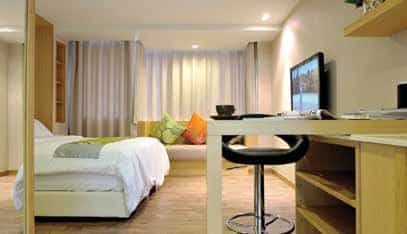 |
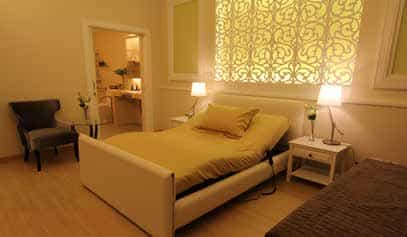 |
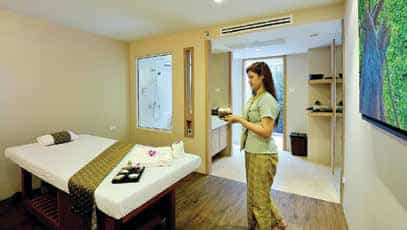 |
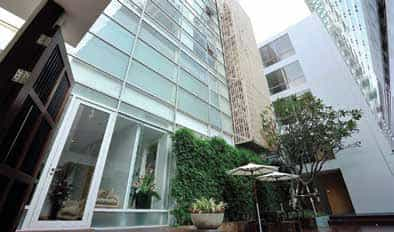 |
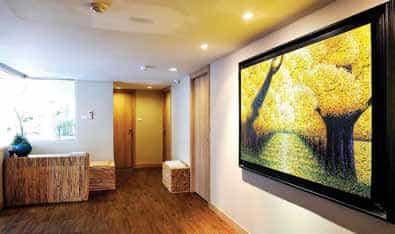 |
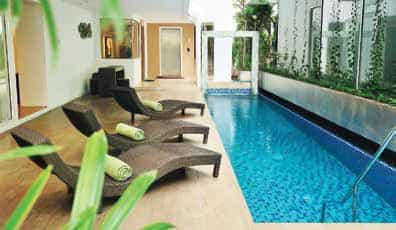 |
Center Services
Upon arriving at your destination airport, you will find a Beike driver and patient coordinator waiting at the airport to transfer you and your caregiver or family to the treatment center. Our drivers are trained in patient transfer techniques and you will find them capable of assisting you in your travels. They will drive you from the airport directly to the hospital where you will find Beike’s service staff awaiting your arrival at the main door. Beike has transport vehicles including cars, SUVs, or handicap vans (wheelchair-lift- equipped vans may be available for an additional charge) at each center.
Once at the hospital, our staff members will escort you directly to our therapy unit and assist you in settling into your room. We will help familiarize you with your room and its amenities and introduce you to the nursing and medical staff. We will also provide a tour of the facilities and review the rules of the treatment ward. Our patient service coordinators can take you on a tour of the surrounding area to find the closest bank with an ATM machine, nearby restaurants, etc. Additionally, the coordinators will take you on a shopping trip to a nearby market so you have the opportunity to purchase any groceries and miscellaneous items you would like. (Please refer to our Hospital Guide for more information).
These onsite personnel will be your guides and translators during your entire stay. They are at the hospital each day and can even be available to you throughout the night if special circumstances arise. If at any time during your treatment you find yourself in need, our well-trained and highly responsive staff is there to assist you.
"We encourage social activity and organize gatherings to help you enjoy your stay, make friends and feel at home during your visit."
The First Days
After such a long journey, we recognize your need to rest and recover and we will provide plenty of time to do so. It is crucial that your body be well rested when treatment begins. The period leading up to your treatment may not only be physically draining but can also be emotionally exhausting. You will be allowed time to relax and become familiar with your surroundings.
Nurses will proceed with assessments and standard checks including blood tests on the first day of your stay. The doc- tors will also introduce themselves to you and evaluate your condition, giving you the opportunity to ask any questions you may have. They will then order a series of specific evaluations and tests appropriate to your clinical condition.
The rehabilitation therapists will also introduce themselves to you in the first forty-eight hours and set up a time for your evaluations to assess your current condition and suggest therapy tailored to meet your specific needs. This rehabilitation is a vital component of our treatment for most ailments and we have focused on partnering with hospitals that have strong rehabilitation reputations.
The doctors will review all of your initial tests upon com- pletion and you will have a chance to speak with them per- sonally about the results. As with the rehabilitation, all initial tests and evaluations pertaining to the stem cell therapy are included in the cost of treatment. Although they are chosen on the basis of their clinical expertise rather than language abilities, many of the clinical staff has Basic English skills and, as always, our translators will be available to you. After the evaluation, you will receive a rehabilitation and stem cell injection schedule. If at any point you have questions about the process, we encourage you to discuss them with our staff. The doctors are available on a daily basis if you wish to have an in-depth discussion with them about the treatment.
The typical length of the hospital stay during treatment is between 18-30 days and your hospital room is included in the cost of treatment. Each patient is required to have a companion with him or her; however, there is no additional charge for your companion should they wish to stay in the room with you.
This person will act as your primary caregiver. We can assist you in hiring someone from the local community to provide daily personal care if you do not have a family member or friend that can stay with you or they cannot assist you for any reason. This cost is not included in the overall price of treatment and would be paid for on-site directly to the caregiver. Typically, the cost of hiring a local caregiver is between US$10 and US$20 per 24-hour period depending on the hospital and the capabilities of the caregiver.
Ready to Head Home
Once your treatment is complete and your post-evaluation is done it will be time to pack up and begin your journey home. Our staff will be available to assist you in any way needed. We will arrange our driver to pick you up from the hospital on your departure date, escort you to the airport, and assist with check-in for your return flight.
If you have any questions once home, please contact our Beike staff. We will remain in contact with you following your treatment. For some patients this will include data col- lection from visits to your personal doctors. We appreciate any constructive feedback and are always looking for new ways to improve our client services.
Finally, if you maintained an online blog while at the treatment center, we encourage you to continue providing updates and adding to the blog even after returning home. This is a great way not only to update friends about any progress, but also stay in contact with those you met while here for treatment and provide others interested in stem cell treatments with valuable information.
Treatment
Stem cell injections are usually delivered twice a week. You will know your injection schedule in advance. The cells are freshly produced and must be injected on the treatment day. If for any reason the doctors determine on the injection day that you are medically unfit to receive the injection, the cells are discarded. This loss is absorbed by Beike and isnot transferred to the patient. Patients are required to be at the hospital at the time of the injection. Any cells lost due to absence will be billed to the patient.
Rehabilitation takes place five to six days per week. Your appointments will be scheduled in advance for a time and place each day. Please keep track of this schedule so you do not miss a rehabilitation session. If you feel you are either getting too much rehabilitation, not enough, have suggestions on how to improve the sessions, or would like a translator present during therapy, please alert your patient service coordinator.
Activities and Free Time
Outside of the injection and rehabilitation schedule, patients are free to move about the treatment center and interact with other patients. We highly encourage social ac- tivity and organized gatherings designed to help you enjoy your stay and help patients and caregivers make friends and feel at home during their visit. These may include in-hospital activities such as movie nights, holiday gatherings, games, and local excursions.
Patients and caregivers will often gather at nearby restaurants for meals or take sightseeing and shopping trips together. We also encourage patients to create and plan their own events if they wish. If you have a certain activity you wish to plan, please feel free to ask our service coordinators for assistance in setting it up. Many friendships made during these activities last long after patients have returned home. We encourage patients to keep in touch not only with the hospital staff but also with the families they spent time with during the treatment.
Frequently Asked Questions (FAQ)
"Beike has received accreditation from the American Assocation of Blood Banks (AABB), which promotes the leading standard of care in cellular therapies for patients, donors, and products."
Will stem cell therapy improve my condition?
While adult stem cell therapy cannot provide a cure for any condition, many patients with degenerative and developmental ailments and their relatives feel unequivocally that this treatment has significantly improved their quality of life. For example, adult stem cell therapy will not remove the genetic presence of a neurodegenerative disease but it may reverse the symptomatic slide a patient faces thus improving a patient’s quality of life and potentially improving his or her chances for the longer-term. It’s important to note that many doctors, patients, and scientists generally believe that the earlier a patient has treatment, the better the impact on the patient’s quality of life.
Why is there so much disagreement about the effectiveness of stem cell therapies?
Beike’s technology has been used in more than 60,000 stem cell treatments since 2001. Despite the fact that umbilical cord stem cells have been used in the treatment of over 70 conditions for more than 20 years in the West, many people still consider these therapies to be ‘new.’ As with any ‘new’ treat- ment modality, a broad range of stakeholders in the medical community have sought to define stem cell therapies in a manner consistent with their viewpoint and ideology, and, in some cases, to their commercial advantage.
Furthermore, some bioethicists have taken issue with embryonic stem cell research and therapies. Beike, however, does not use embryonic stem cells in any of its therapies. Beike boasts an impeccable safety record and enjoys the support of various branches of the Chinese government, leading Chinese universities, and hospitals. Beike has received accreditation from the Ameri- can Association of Blood Banks (AABB) for its Stem Cell Quality Management System.
Can the patient’s own cryo-preserved cord blood or a relative’s be used for treatment?
As blood products are highly regulated in most countries including China, it is not possible for patients to import their own cord blood from other countries into China or most any country. Beike is only allowed to use umbilical cord stem cells from specific hospitals within China. The stem cells are tested multiple times throughout their expansion process by both blood banks and Beike’s own private laboratories for safety. It is important to note that while we believe using one’s own cord blood stem cells may result in dramatic improvements, our experience utilizing rela- tives’ cord blood for treatment of Chinese patients has not shown there is an added benefit over using donor cells. Most importantly, one cord blood sample can only make a single packet and our treatment protocols call for multiple packets. Our goal is to eventually allow families to use their preserved cord blood stem cells in the future.
What type of patient will not be accepted for treatment in Beike’s partner hospitals?
Beike will not provide stem cells for any patients whose well-being could deteriorate due to international travel, patients on a ventilator full-time, or any patient our medical department feels will not have a chance to benefit from the treatment. We will not provide treatment if we feel that there is potential, no matter how slight, for any short- or long-term harm to the patient. Currently, Beike will not provide stem cells for treatment for patients with cancer or a high risk of cancer. We will also not provide stem cells for pregnant women. We ask these women to wait until their condition has stabilized after giving birth.
Does umbilical cord blood or umbilical cord mesenchymal stem cell treatment cause cancer?
It is important to note that there is generally no concern by informed or unbiased scientists about cord blood or cord mesenchymal stem cells (unlike embryonic or fetal stem cells) causing cancer or tumors. None of the 16,000+ patients that have been treated with Beike’s stem cells have developed cancer due to the treatment. In actuality, researchers are currently finding ways to use umbilical cord and adult stem cell-derived ‘killer cells’ to attack tumors and treat cancer patients.
Why must I travel to receive treatment?
Beike has been a pioneer in adult stem cell treatments for the last decade. The hospitals and medical staff working with Beike are highly experienced in handling stem cells and monitoring patients’ treatments. Furthermore, patients looking for a complete treatment package in terms of hospital quality, rehabilitation, and cost of stem cells are able to get the best value for the cost at a Beike affiliated center.
Why would Beike want a caregiver to stay with me during therapy?
Staying several weeks in a foreign hospital can be a taxing endeavor. We believe that bringing a family member, friend, or caregiver will make the transition easier and also provide support for you in many ways that our translation and medical staff may not be able to. If you absolutely cannot bring someone with you, our local patient coordinators can help find a caregiver in the local community. These caregivers are very affordable and can stay with you for six-, twelve, or even 24-hour periods through- out your stay. Please speak with your patient representative if you are unable to bring a caregiver with you.
Why do Beike treatment protocols include supportive therapies for most ailments?
During a typical treatment cycle, most patients receive daily rounds of rehabilitation therapies, or ‘Functional Medicine.’ These include physiotherapy, quatherapy, occupational therapy, acupuncture, hyperbaric oxygen therapy, transcranial magnetic stimulation, nerve growth factor injections, human microbiota transplant, and nutrition therapy.
Beike’s scientists and medical partners believe these therapies work to help activate stem cells throughout the body. Just as a steroid user cannot greatly increase muscle mass without working out, stem cells work best when the body is active. These therapies can help provide a high level of activity for your body and put you in the best possible position to see benefits. Patients with eye disorders may only receive a rehabilitation program composed of acupuncture if vision is the only affected area.
What else can I do to get the most out of my stem cell treatment?
It is important that you arrive for treatment as healthy as possible and that you avoid fevers, colds, infections, and injuries. Stem cells naturally migrate to the injured or sick areas of the body and any secondary infections can lead to a decreased quantity of stem cells available to relieve your primary neurological or vascular condition. There are some simple steps you can follow both during and after your treatment to protect and nurture new cells.
These include avoiding sugar-rich foods, tobacco and alcohol products for six months, eating neuron-protective foods that are high in omega-3, utilizing supplements such as folic acid and turmeric extract, avoiding and minimizing stress, and maintaining a moderate (but not extreme) exercise program. In combination, these steps can help protect and provide a healthy environment for newly developed cells.
What is included in the cost of the treatment?
The cost of the treatment includes a standard patient room (with an extra bed for your accompanying caregiver), stem cell injections and necessary medical treatment resulting from these injections, rehabilita- tion as prescribed by the center’s rehabilitation specialist, interpretation services, and transportation from the local airport to the hospital upon ar- rival. Depending on the hospital selected for treatment, other expenses, such as food, laundry, and travel to the local airport, may not be included and is the patient’s responsibility.
If I choose to receive treatment at a Beike part- ner hospital, what will be the hardest part of my journey?
For most patients, the most challenging aspect of the treatment is the journey itself; travel time is long and getting on a plane, both to and from the treatment country, can be difficult and tiring. The interim stay and the treatment itself is the easy part. We encourage all patients to buy travel insurance before their trip. Travel insurance can help to cover any costs incurred from accidents outside the hospital and subsequent medical expenses, lost luggage, canceled flights, and emergency trips home. Please ask your local travel insurance provider for further information
Registration Process - Six Easy Steps to Receiving Treatment
1. Learn More
Read all of the provided information and ask your Beike patient repre- sentative any questions you have. He or she is here to help you through the registration process. You can contact your representative by both phone and email.
2. Provide Medical Information
Before acceptance, our doctors must first receive a completed online Beike Medical Form. They may also request additional medical docu- ments to learn more about your condition. The medical form is located at: www.stemcelltreatmentnow.com.
3. Get Accepted for Treatment
Our doctors accept patients for treatment based on both the diagnosis and general health. Our main concern is to provide a treatment that will not be detrimental. Even after acceptance, our doctors might still request more medical documentation for use during the treatment.
4. Register for Treatment
After receiving an acceptance, patients are free to register for a treat- ment date. You should list approximate date, location, and number of injections you wish to apply for. These can be submitted on the online Beike Registration Form.
5. Receive a Confirmation
After submission of the Beike Registration Form, your representative will book you into the appropriate hospital. A confirmation email will be sent to you with the location and exact admission and discharge dates. This email will also contain payment and travel information.
6. Prepare for Arrival
Payment is generally due one month before the scheduled admission date. A travel itinerary is due no later than two weeks before the start of treatment to allow our coordinators time to arrange airport pickup. Your representative will also help assist with any other travel planning.
Partner Hospitals - Selection and Site Preparation
“Beike selects only the best affiliated hospitals to provide treatment using our stem cells to international patients.”
Better Being Hospital, Bangkok, Thailand
Headed by Dr. Tosak Tip-Pairote, Better Being Hospital was established to give patients a more comprehensive approach to treat chronic illness. A leading practitioner of Functional Medicine, Dr. Torsak believes in a comprehensive support therapy program to not only help one ailment, but also any other fundamental problems the patient may have. Our unique partnership with Dr. Torsak provides patients with a comprehensive medical approach to stem cell therapy. Functional Medicine allows patients to be in the best possible state of health in order for the stem cell therapy to have the best chance of effectiveness.
Regenerative Medicine Today
The hope of millions of patients lies in the advancement of stem cell technology; the realization of this hope is tied intricately into the efforts of Beike Biotechnology.
Our customer representative at PlacidWay will help you connect with Beike Biotechnology in Bangkok, Thailand. Click contact us button below to get started:



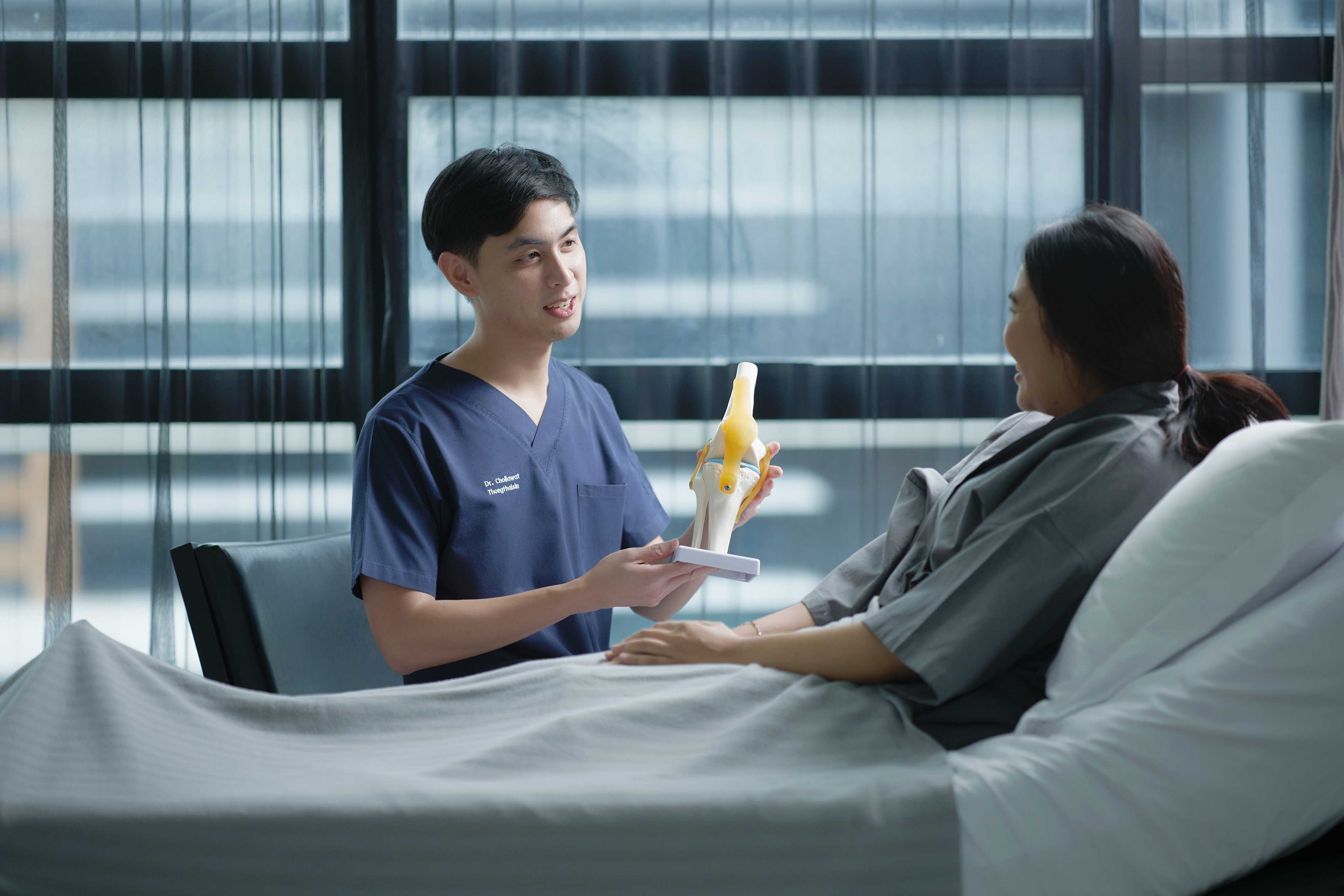
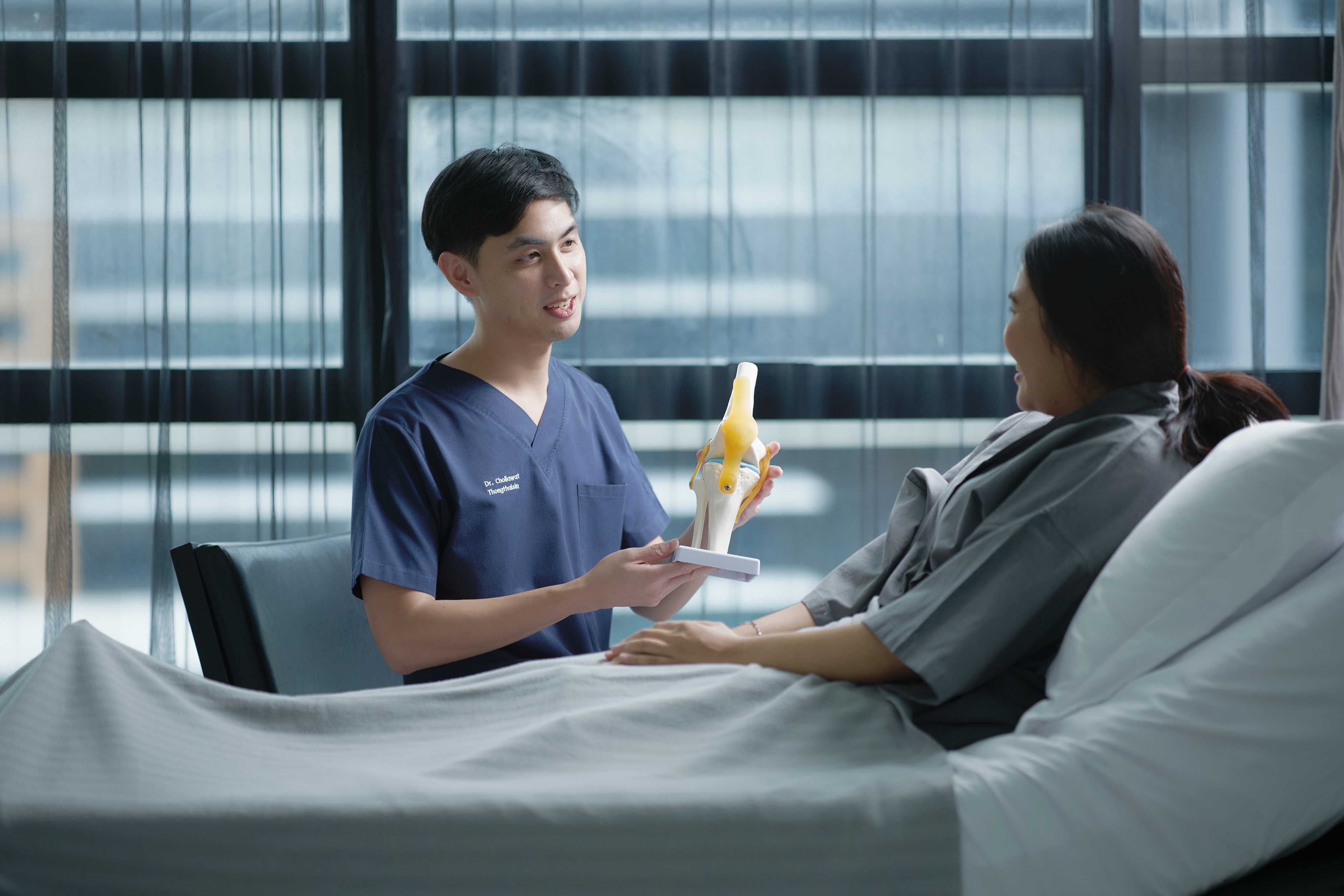

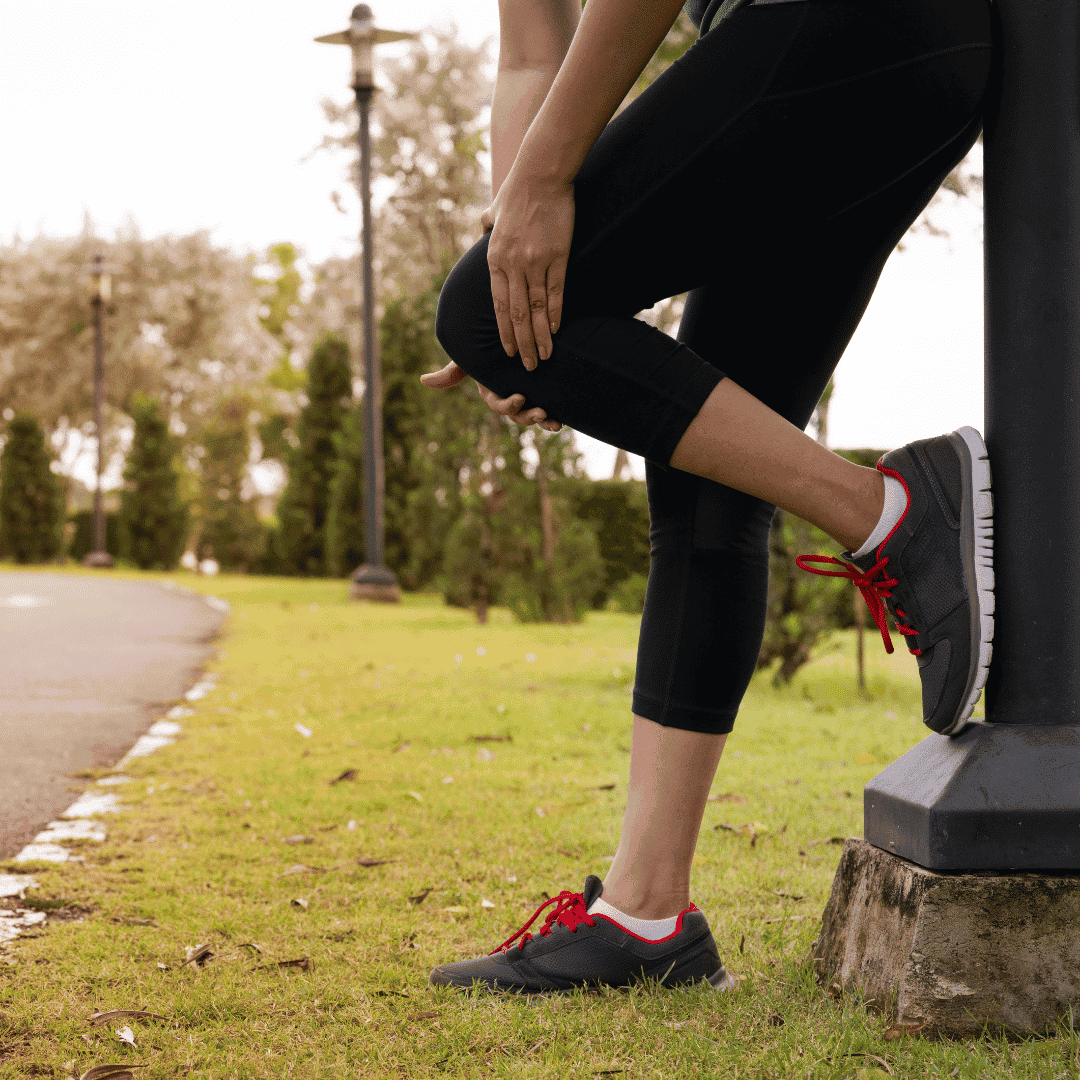
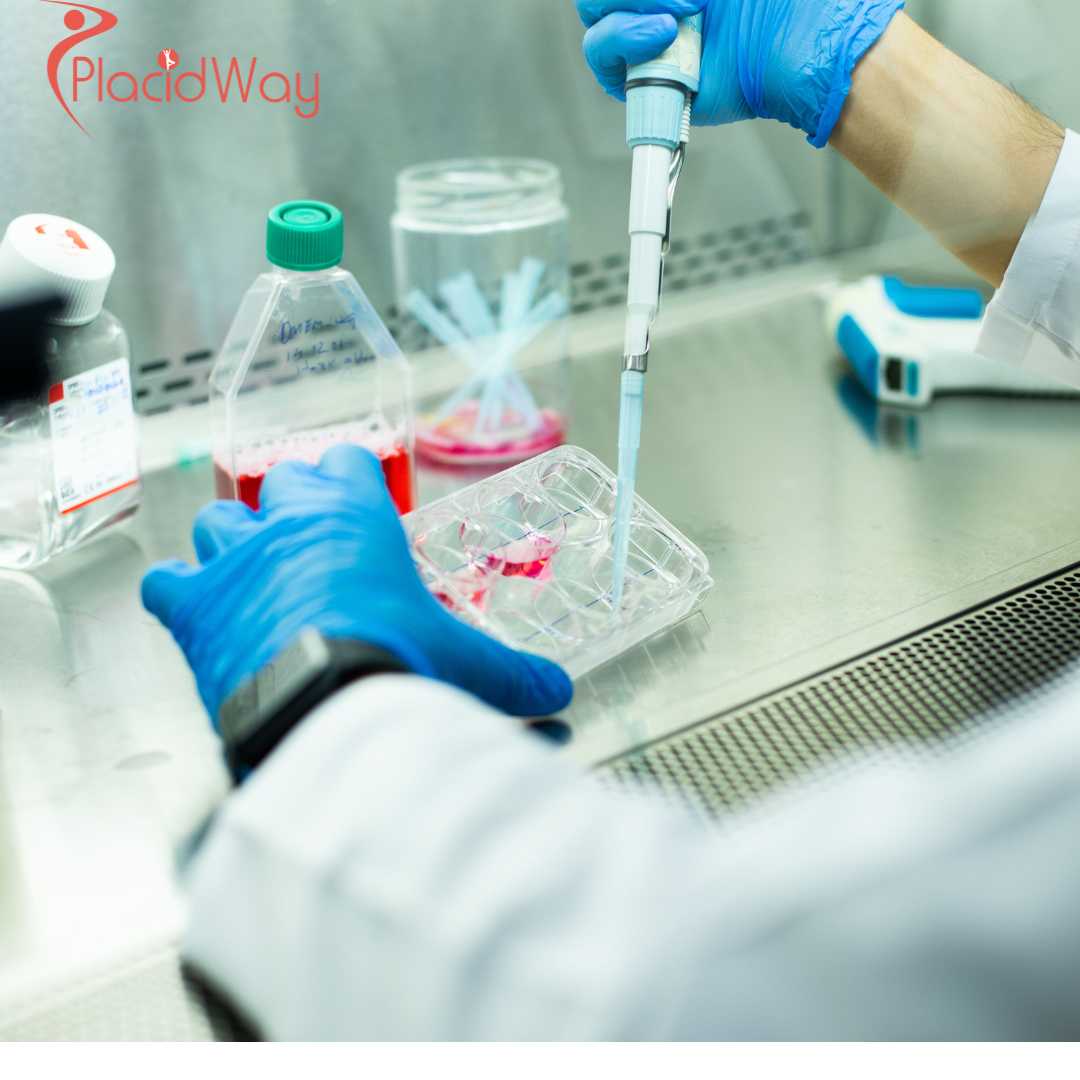
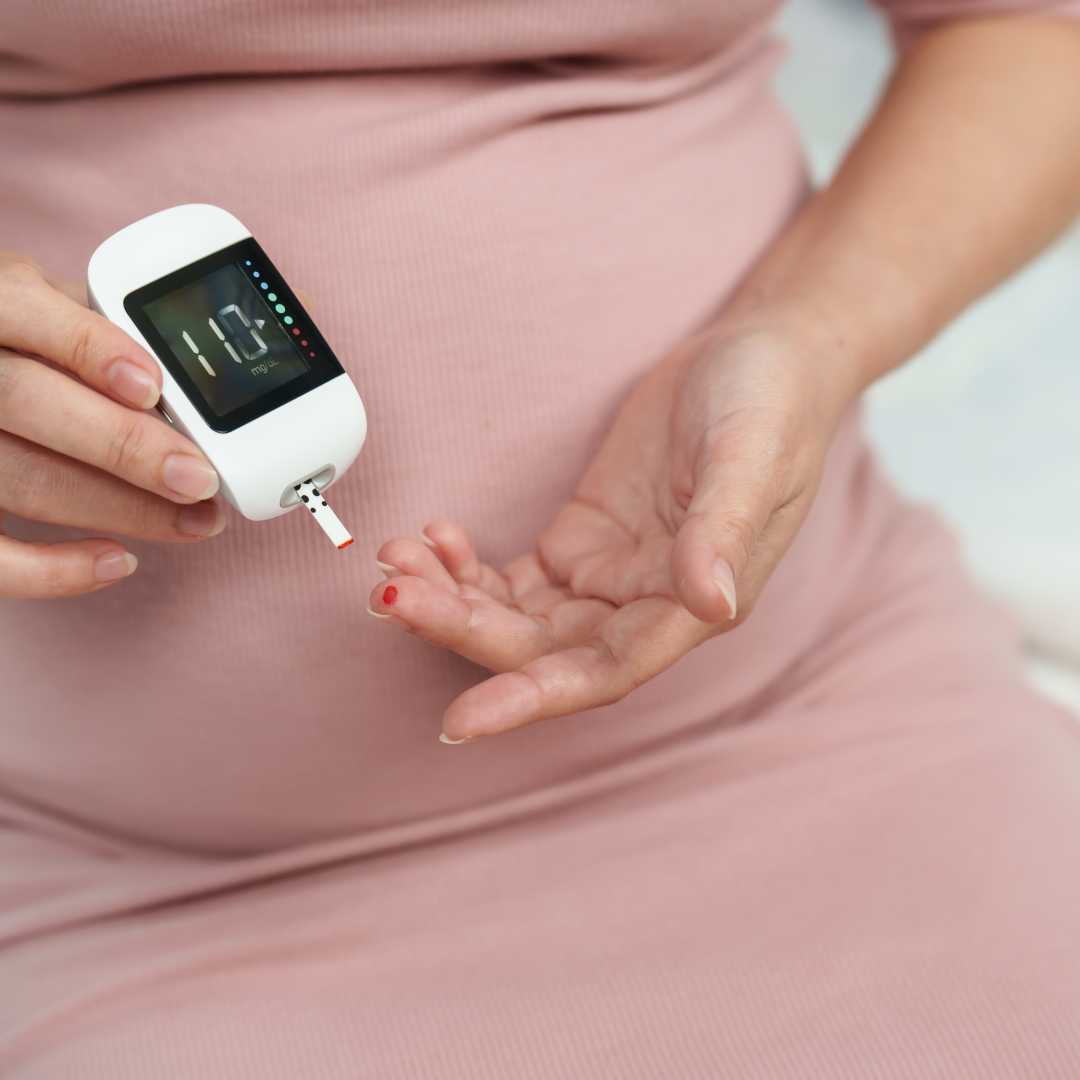
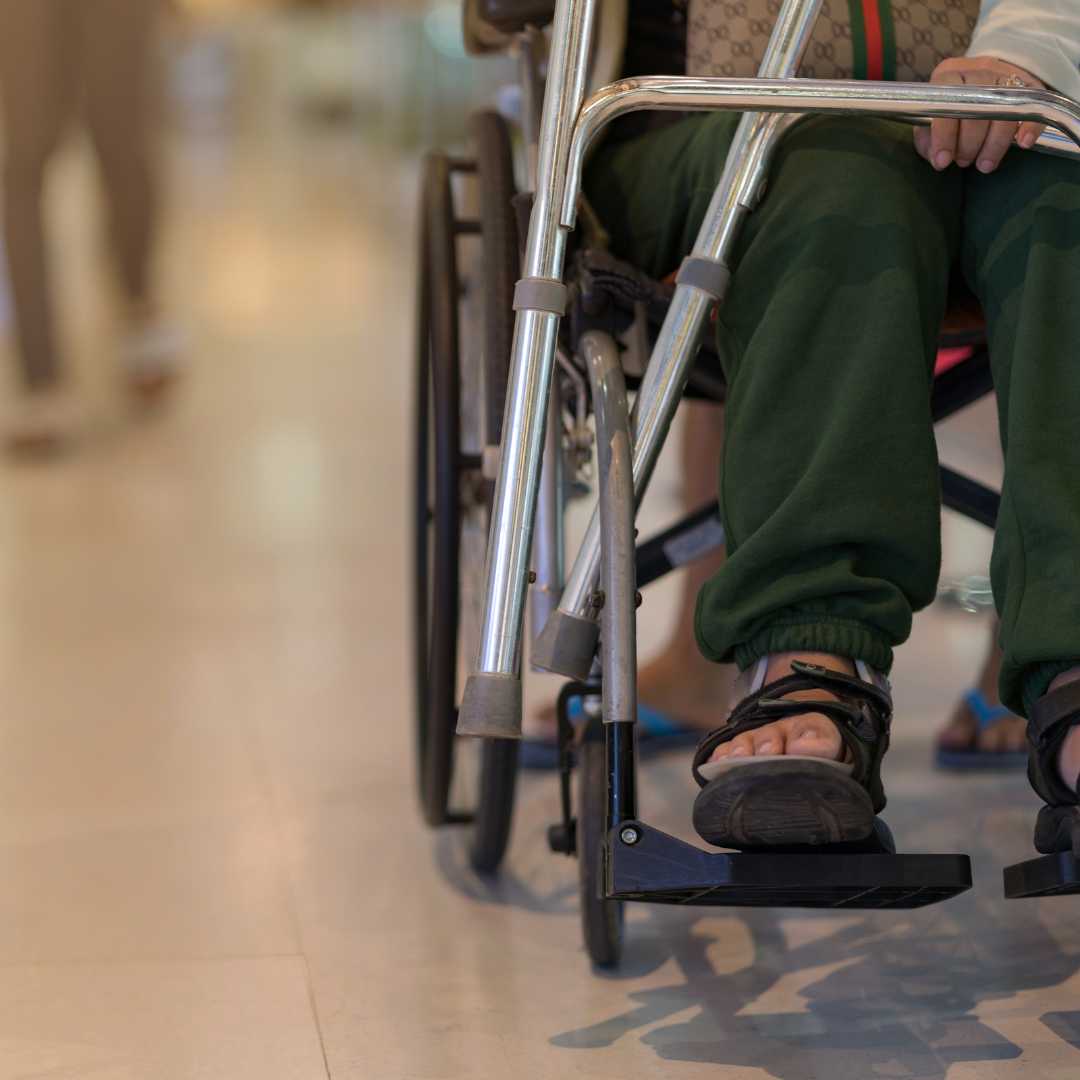
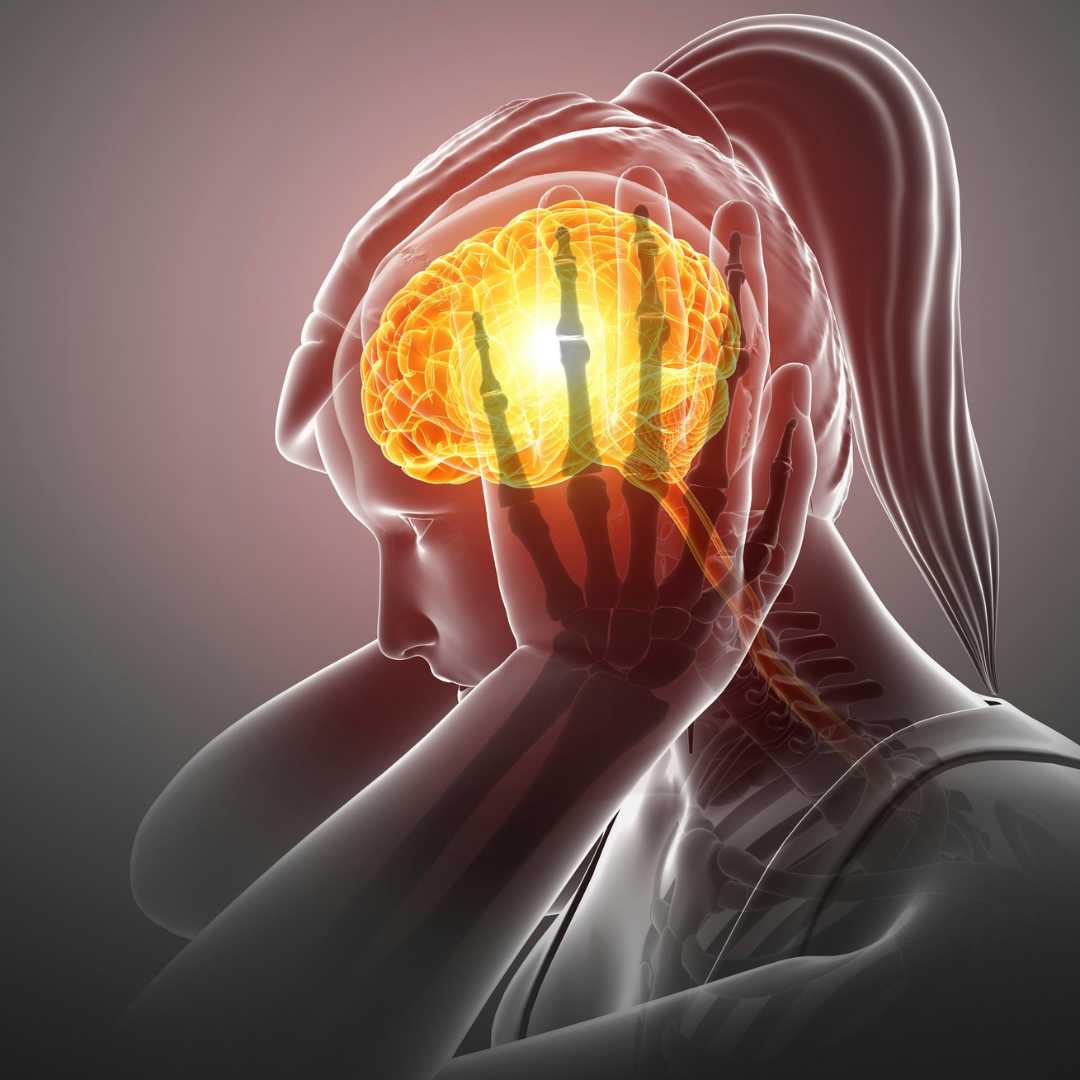

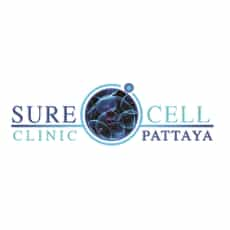
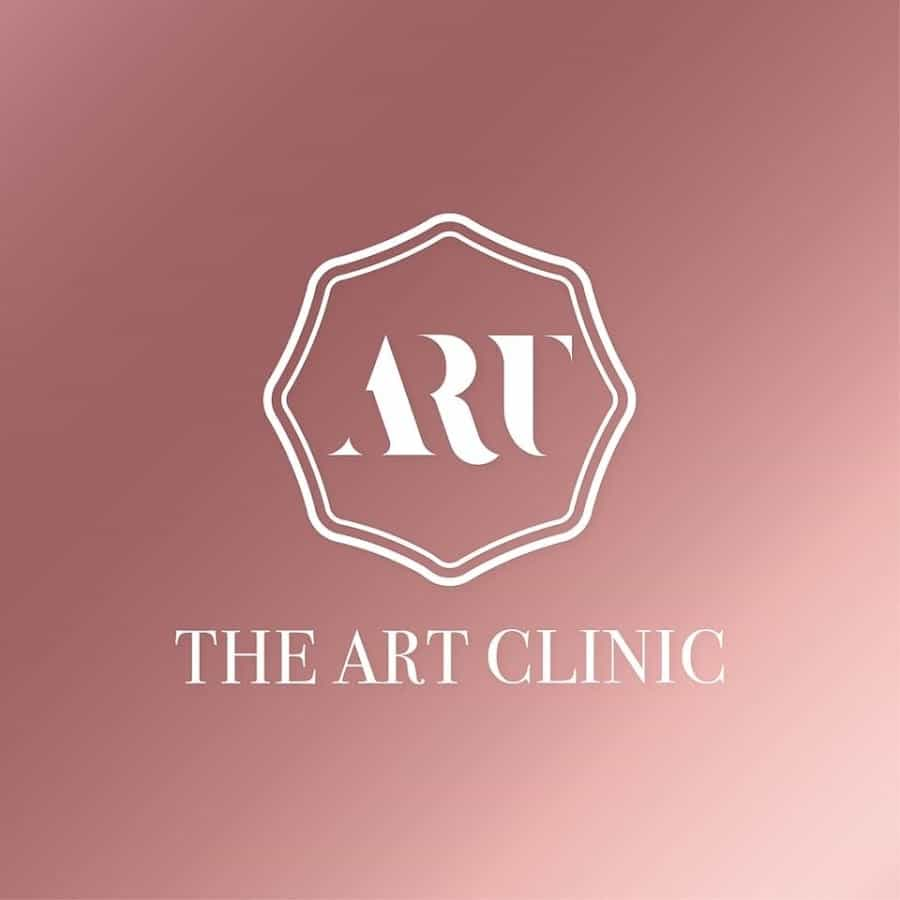

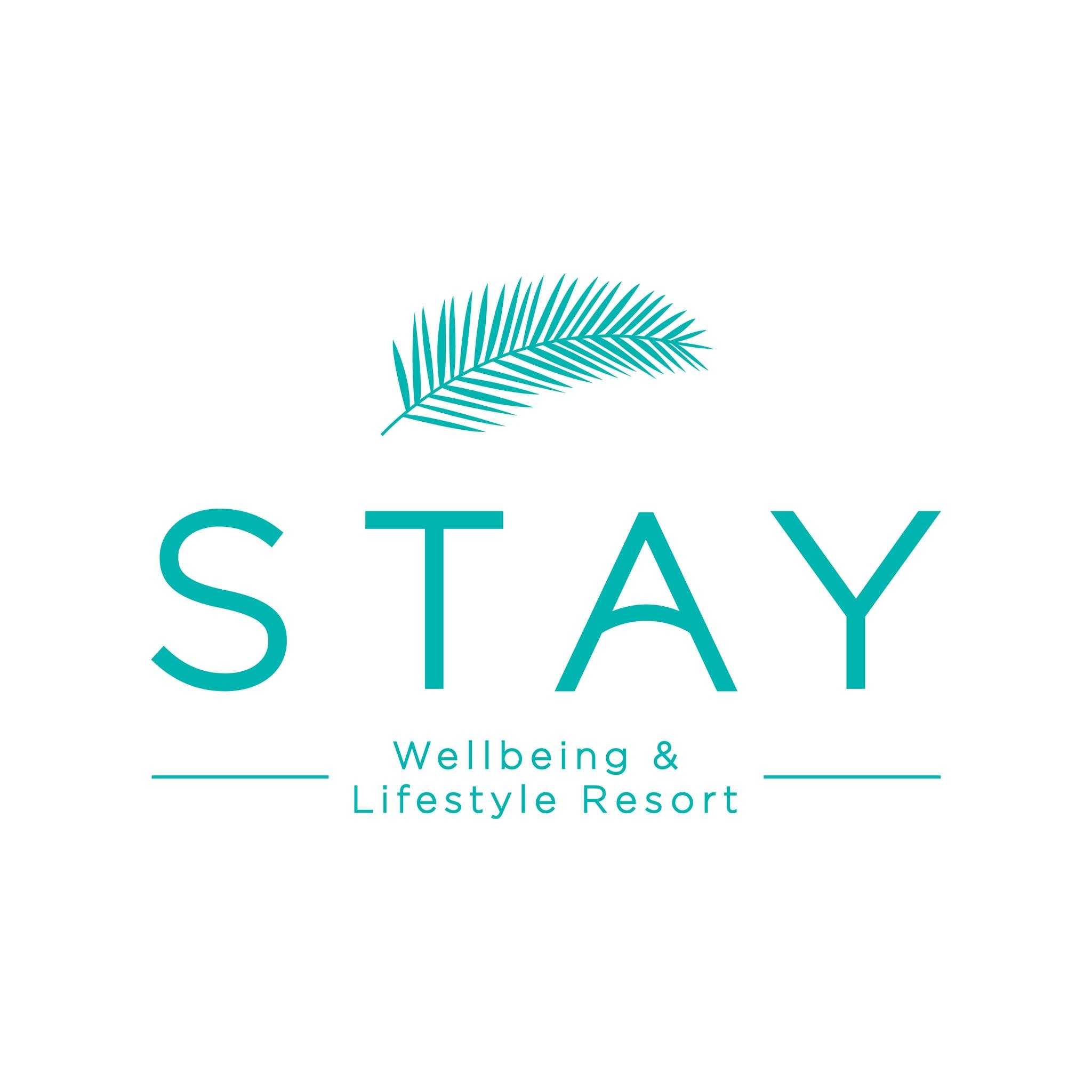

Share this listing